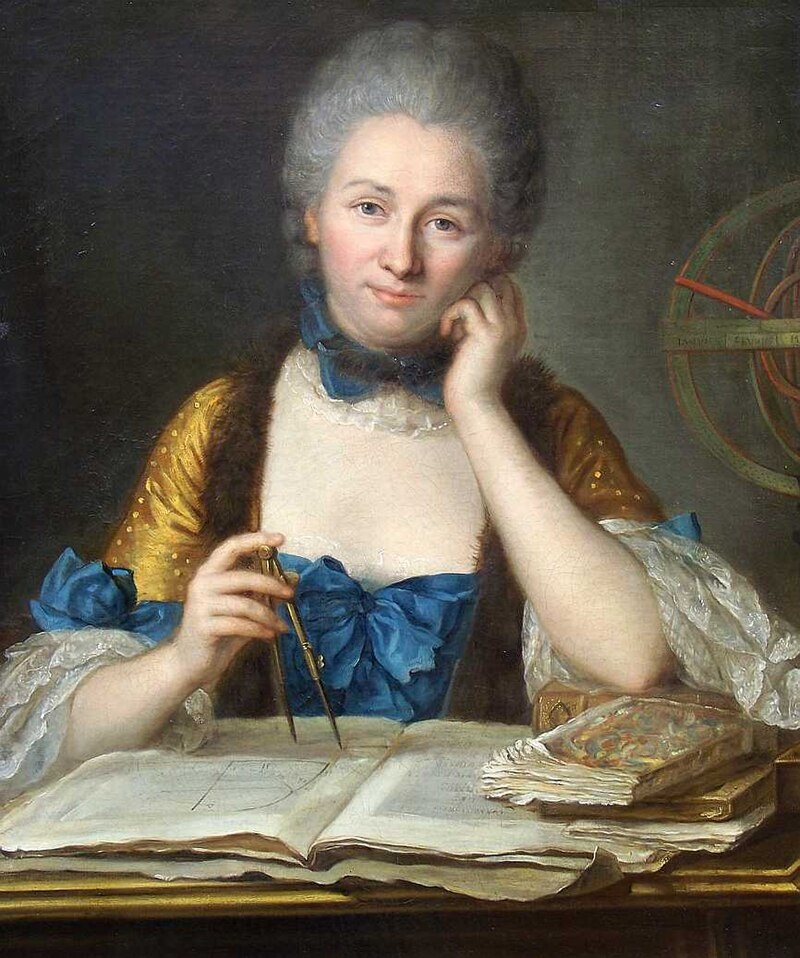- HumanitiesIT HAPPENED
- 10 de September de 2024
- No Comment
- 7 minutes read
Mathematician, physicist and philosopher Madame de Châtelet passed away

IT HAPPENED…
On September 10, 1749
Mathematician, physicist and philosopher Madame de Châtelet passed away


On September 10, 1749, the eminent French mathematician, physicist and philosopher Émilie Le Tonnelier de Breteuil, Marquise de Chàtelet and translator of Newton into French, died in her castle in Lunéville. Ad usum textbooks often gloss over her status as a scientist, subordinating her to her well-known relationship with Voltaire. In any case, she is a figure who more than stands on her own two feet and on her work. She was a woman of the Enlightenment in the full sense of the term. Her premature death at the age of 42, as a result of the after-effects of childbirth, ruined what was by then a fully consolidated, prestigious and promising career.
She was born in 1706, being the daughter of Baron de Breteuil, an enlightened man and friend of Fontenelle, whose salon was frequented by the great philosophers, scientists and ambassadors of the time. It was in this environment that young Émilie’s interest in knowledge and science was awakened, encouraged by her father. An unbeatable environment and an interest that she maintained all her life long.
Since women were not allowed, Émilie was could not attend school or university, but her father took care of providing her with the best tutors, which she knew how to take full advantage of with her intelligence. By the age of 12 she had already read Cicero in Latin and Aristotle in Greek, she spoke, in addition to French, Latin and Greek, English, Italian and German, and had received a solid training in scientific and humanistic education. A music fan, she played the harpsichord and practiced, something unheard of for a woman of the time, fencing, gymnastics and horse riding.
Presented at the court of Versailles at the age of 16, she became the star of Paris, which aroused the envy of the usual spiteful and resentful people, who criticised her fondness for glamour, her frequent love affairs, her personal charisma and her vast culture and knowledge. Anyway, all this had a very little effect on her. She was an independent and autonomous woman, and remained so after her marriage, at the age of 19, to the Marquis de Chastellet-Lomon (the name “Châtelet” was a spelling variant introduced by Voltaire). Among her many scientific contributions, she was, together with Voltaire – they wrote some works in collaboration – the introducer of Newtonian physics and Leibniz in France.
She wrote a treatise on the propagation of fire in 1739, at the age of 33. But the work that made her famous as a scientist was her Institutions de Physique (1740), a treatise that not only showed her position on Newton, critical in some aspects of this author, but also on Leibniz, whom she considered to be on the same intellectual and scientific level as the former, which produced some friction with Voltarie, who, as is known, not only did not value him either as a scientist or as a philosopher, but even often mocked him. Émilie won the intellectual game against Voltaire, although she did not obtain as much fame as him. The book encouraged the debate between Cartesians, Newtonians and Leibnizians.
She also wrote a ‘Treatise on Happiness’ and translated Bernard Mandeville’s ‘The Fable of the Bees’ into French. She maintained correspondence with many scientists and intellectuals of the time, including Clairaut, Maupertuis, Algaroti, Bernouilli, Jacquier and the Prussian King Frederick II, among others, as well as with the scientific Academies of Berlin, Scandinavia and Russia, as well as, of course, the French one.
In 1739 she began the translation from Latin into French of Newton’s masterpiece Philosophiae naturalis principia mathematica, in a version commented by herself. Work that she interrupted and resumed over the course of several years. In 1746 she obtained the royal decree for its printing and publication. She was finishing it in 1749, when she learned that she was pregnant, which, perhaps premonitory, induced her to speed up the translation of the last chapters of the work. On September 3 the birth took place and everything seemed to be going well. Six days later things became complicated, she had feverish attacks and began to feel very ill. The next day, already in a very precarious state, she signed the translation and wrote the date, ordering its immediate delivery to the Royal Library. Shortly afterwards, she lost consciousness and died, surrounded by her husband, Saint-Lambert and Voltaire.
It was September 10, 1749, 275 years ago today. Educational Evidence wants to pay a well-deserved tribute to her memory.
Source: educational EVIDENCE
Rights: Creative Commons

